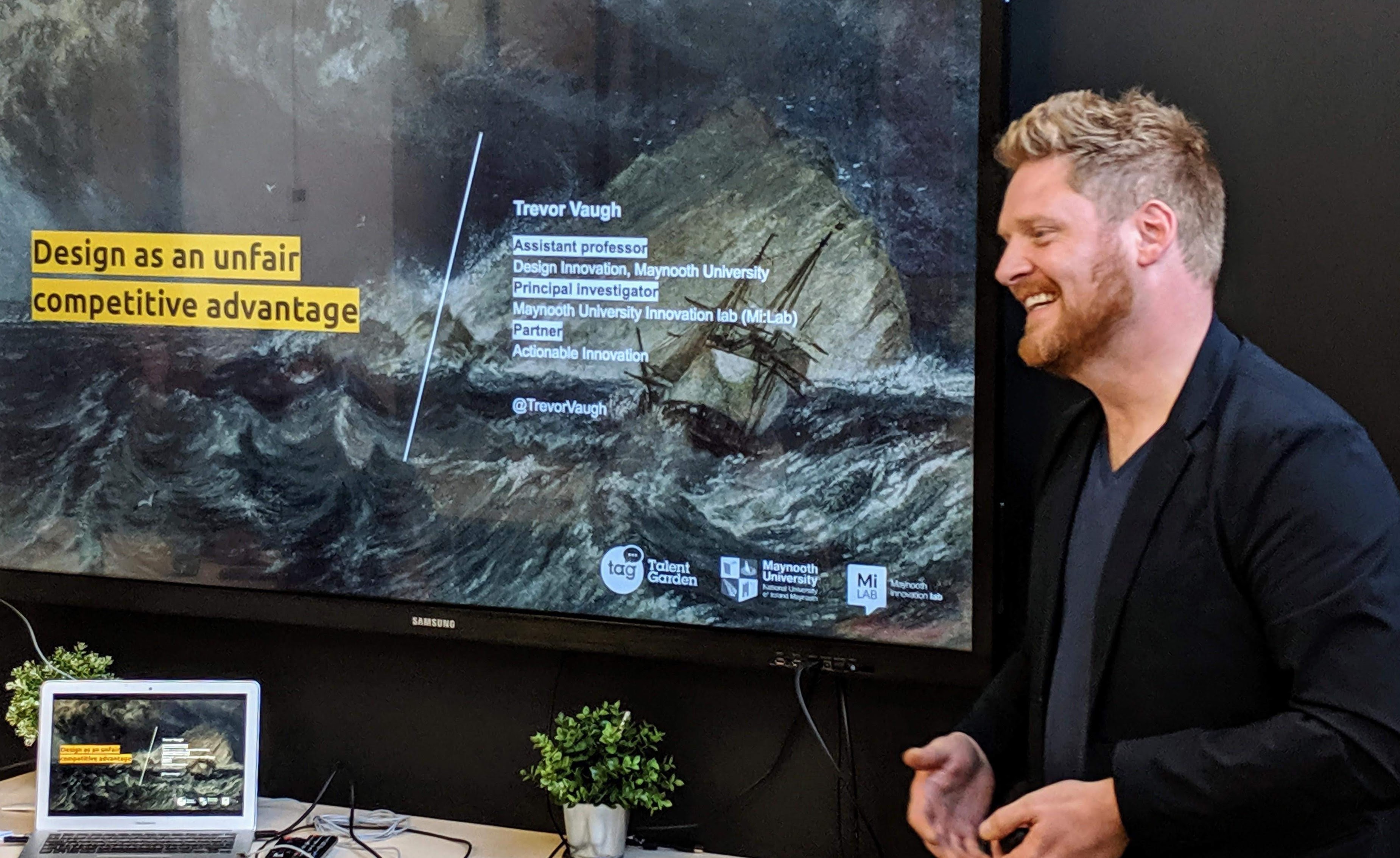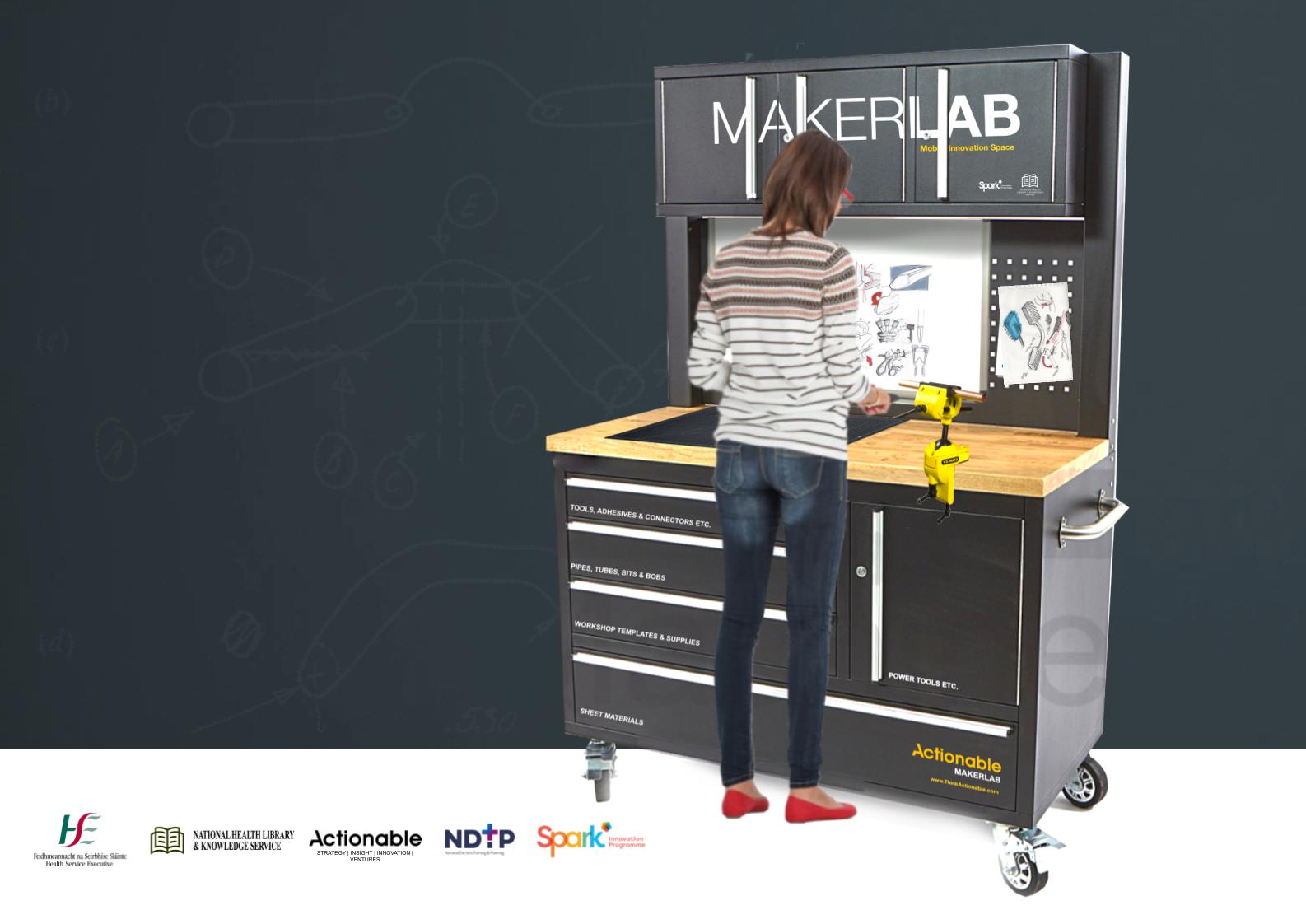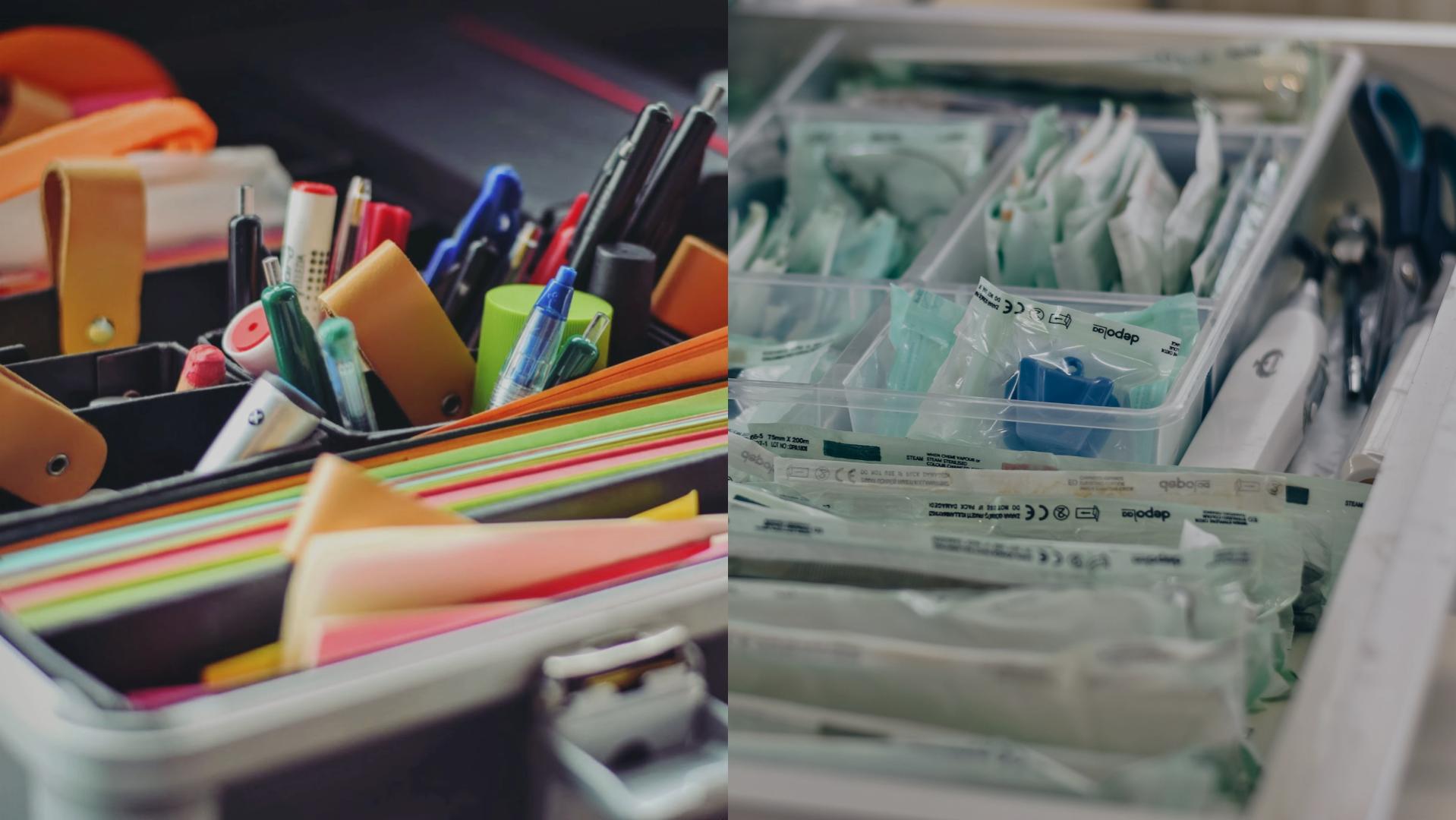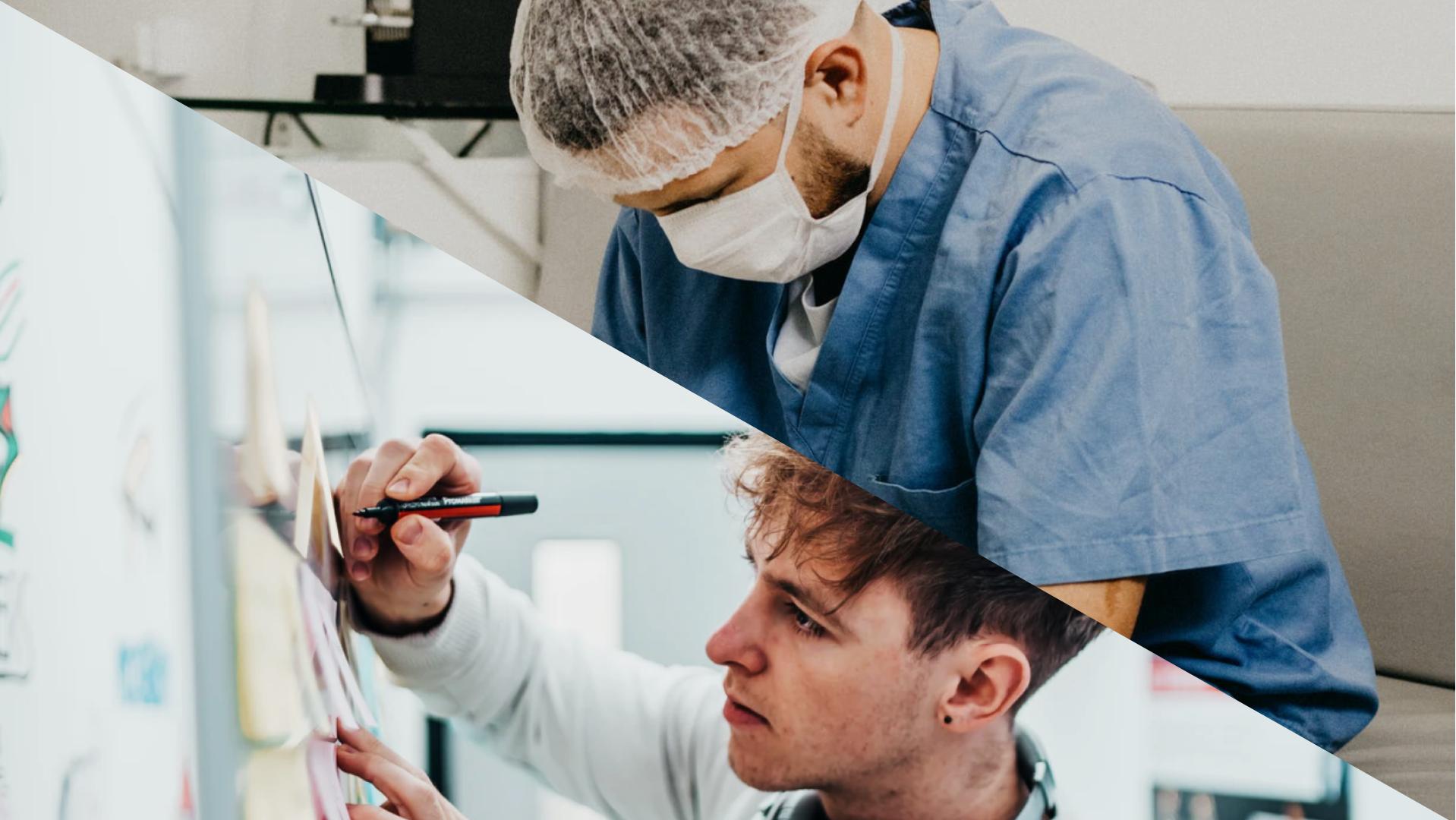The HSE recently announced Design on the Frontline, a call for designers to submit ideas to solve one of three pernicious problems identified by healthcare workers during the pandemic: issues around increased PPE usage, the negative effects of cocooning on older people and the impact of isolation on everyone’s means to connect with one another. Designers are asked to submit early-stage solutions by 6 April, and a number of feasible proposals will be developed and delivered. When so often our industry talks about design’s capacity to affect positive change and make things better, this seems a unique opportunity to put our words into action. But this is actually one of many initiatives to inject (pardon the pun) design into the health service in the past few years, with more still in the pipeline.
Maynooth University’s Assistant Professor Trevor Vaugh has been working in collaboration with the HSE for a number of years now. It is he who has developed Design on the Frontline with the HSE, but this is only one of a number of strategies to demonstrate design’s relevance to the health sector. If you’re wondering what relevance that might be, Trevor will tell you it’s significant. ‘We have been introducing human-centred design approaches to hundreds of medical students which, when you think about it, is quite exciting. Not because they will all start designing, but because design mindsets like empathy, problem framing, visual communication, tolerance for ambiguity and creativity can really complement what they do, are quite actionable and I really believe can make them better doctors.’ In order to develop this, Trevor has been delivering, among other things, workshops and courses in design thinking and design processes.

‘I was asked to deliver a series of innovation sessions for a group of doctors as part of the HSE’s internal Spark Innovation Programme. I guess what I had to say resonated, as four years later I am still delivering sessions every year. It's important to point out that these aren't just workshops for the sake of workshops: they are linked to funding and action. Staff on the programmes all have ideas to improve the system around them, and this training helps them understand problems in a different way, providing tools, techniques and the creative confidence to take action. We have seen some really powerful reframing of challenges because of this training and many great initiatives have since been implemented, delivering efficiencies and savings.’

In addition, Trevor is involved in the creation of mobile design labs to be placed in five hospitals around Ireland later this year to enable experimentation and prototyping of design solutions and the delivery of a module in Design Innovation for 50 HSE staff studying a Masters in Digital Health Transformation. ‘On completion, as well as a design project, one of the assignments was to write an essay on the value of human-centered design to their role and to the system. I’ve read a lot of essays in my time, but I was genuinely blown away by their understanding and reflections on design and their plans for embedding elements of design into their own healthcare practice.’
Trevor also sees a broader understanding of design and its value developing across the HSE. ‘From my point of view there has been really steady progress and I am seeing a real appetite and appreciation for design. Obviously there is a lot of work required to build a case for wide and deep integration of design into the system, but over the next five years I believe we will see some really positive developments. One huge signal towards this emerged recently when the HSE released their Corporate Plan 2021–24. Across the plan there is a strong emphasis on design, with two of the seven “approaches for implementation” focussing on design, patient centricity, user experience and co-creation. I don't believe that this is hyperbole, rather, it felt authentic and informed.’

So back to Design on the Frontline, where does this fit in? It’s not a competition, nor a hypothetical brief, but rather an invitation to reflect, experiment and ultimately showcase how designers can deliver value to the healthcare system in a targeted, practical and timely way. COVID-19 has amplified the wicked nature of the problems faced in healthcare, but Trevor is convinced of designers’ unique capacity to contribute valuable ideas. ‘Design approaches tend to zoom into the subtleties of problems, zoom out to see how it might impact the bigger picture and then creatively find an appropriate solution. This is why the call is open to all disciplines and all career levels. I absolutely understand that starting a project at a distance is far from good practice — some might even decide it is a reason to not even submit something. However, I think we sometimes rely a little too heavily on our process and perfect conditions, forgetting that we can draw on our own lived experience and amplified imagination. For this project, we need to draw from what we have read in newspapers, heard from family and friends working on the frontline and what our grandparents and neighbours are experiencing.’
There’s room for solutions of all kinds from designers of all stripes, and Trevor highlights the particular challenges and opportunities for which a communication design approach may be particularly relevant. ‘During my time reviewing challenges identified by healthcare staff and thinking about problems in the system, the most prevalent and most pressing issues revolve around communication. Communication affects everything from patient understanding, missed appointments and medication adherence, to staff motivation and hospital hygiene compliance. I haven't seen them, but I just know that the current answers to the three Design on the Frontline briefs are terrible flyers that nobody reads, terrible posters that nobody understands and terrible forms that nobody fills in. That is not meant as an insult to the people who create them; they are experts in keeping people alive, not experts in simplifying complex information and finding brilliantly effective ways of helping people understand and act.’

Of the ideas submitted, a team of healthcare workers is ready to assess and select ideas which they feel can be implemented quickly to positive effect. For any project that is selected to be explored further, the designer(s) will be invited to stay involved if they wish and this involvement will be remunerated and supported to insure its success through feasibility testing, onsite piloting and beyond. This call might act as a catalyst and give designers permission to reflect on and process some of what is already in their heads, get it out and send it in. We are, as a community, passionate about our craft and about perfection, but that's not what this call is about. As Dr Mike Ryan from the World Health Organisation said, ‘Speed trumps perfection. Perfection is the enemy of good’. Design on the Frontline is not looking for a rigorous design process or beautiful presentation, but rather an understanding of a problem, a creative insight into it and a concept proposal that demonstrates why it is appropriate and how it might help. This isn't a design competition or college project — this is a search for proposals that might make a difference, quickly.
.jpeg)